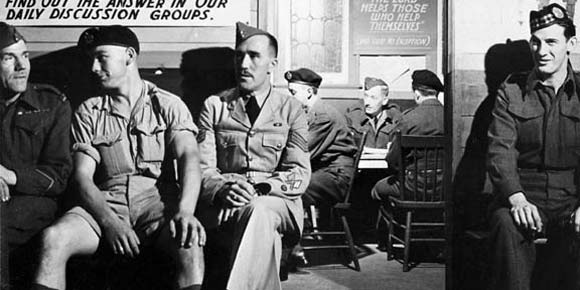by Bruce Cherney (part 1)
In the years immediately following the Second World War, Winnipeg, Manitoba and Canada were in the midst of an impressive home-building spree to meet pent-up demand that had been put on hold because of the war effort and a decade-long depression.
The housing boom was helped by the government’s decision to monetarily reward returning troops for their service.
The nation was coming out of the depths of the Great Depression and war, and Prime Minister Mackenzie King’s Liberal government feared a recession would erupt in post-war Canada. Well before VE-Day, the Canadian government was planning for the post-war era. Social measures were undertaken to stimulate the economy in expected hard times. Family Allowance legislation was passed by Parliament, which gave the “Baby Bonus” to Canadian mothers.
In the Speech from the Throne on January 27, 1944, setting out reconstruction plans, the government said the “post-war object of our domestic policy is social security and human welfare: The establishment of a national minimum standard of social security and human welfare should be advanced as rapidly as possible.” The government pledged to create “useful work for all who want to work,” to upgrade nutrition and housing and to provide social insurance.
Above all, the government did not want a repeat of the aftermath of the First World War, when returning soldiers were virtually abandoned to struggle on their own for survival in post-war Canada.
The Department of Veterans Affairs was created in 1944 to handle repatriation of the troops, and the transition back to Civvy Street.
Veterans were given a financial head start to rebuild their lives:
• Veterans received $100 to buy civilian clothes.
• Veterans were paid a war service gratuity of $7.50 a day for each 30 days of service, an additional 25 cents for each day overseas, and one week’s pay for each six months of service outside Canada.
• Approximately one million men and women received gratuities for an average of $488 or $5,000 by today’s standards.
• Spouses of those who had died in the service received pensions, set at 75 per cent of what a disabled veteran would have received, and children received additional benefits.
• The Veterans’ Land Act helped veterans buy land for their homes or businesses; 33,000 veterans obtained land for farming.
• DVA provided vocational training for 80,000 veterans and helped rehabilitate those who had been wounded.
• With financial aid from the Veterans Rehabilitation Act, 54,000 veterans went to university.
• Those who didn’t take training or land could obtain a “re-establishment credit” to renovate their homes, buy furniture or start a business.
• Under the Veterans Business and Professional Loans Act, the government paid out $11 million in 6,092 loans to veterans.
• A form of unemployment Insurance was paid to those who had trouble finding work. Initial benefits were $13 per week to married veterans and $9 for unmarried veterans. From 1945, the program cost about $51 million.
But what the government feared did not transpire. Canadian factories that had been turning out airplanes and tanks, retooled to turn out consumer goods such as fridges and stoves. Because of the government’s programs, returning veterans were well-heeled with money to spend on goods and services.
The post-war era became one of prosperity and expansion lasting for three decades.
Returning veterans contributed to a housing boom across Canada. In Winnipeg, land formerly occupied by River Park was quickly filled by 250 homes.
M. McCracken in Memories are Made of This recalled the types of homes that were built: “The houses were white stucco bungalows in the North American ranch style or Cape Cod design. The contractor was careful to avoid sameness; he altered small details on each house, here varying colour of the trim, there adding shutters to one picture window and leaving them off another. The houses were of three basic designs: a peaked roof bungalow of one and a half storeys with acute peak over the front door and a picture window on one side; a one-storey bungalow with a low roof and a picture window; and a two-storey box with two windows downstairs and two upstairs. All three designs had slab doors with one of several window patterns cut into them, the most common being three descending upright triangles.”
It was the returning veterans who changed the shape of Canada’s cities. The advent of suburbia and urban sprawl was a direct result of their desire to raise their families in peaceful residential areas with large lots.
Winnipeg's population had jumped by 5,000 in the six years since the war began, but only 2,500 housing units had been built. It was estimated at the time that 4,000 homes were needed.
“Entire streets were hastily constructed as the empty spaces of the city and its suburbs began to fill up like squares on a bingo card,” wrote Alan Artibise in Winnipeg: An Illustrated History. “This growth meant provision of new streets and sidewalks, sewers, water, electricity and telephones ... In short, there was a general air of prosperity, factories hummed, new industries and head offices located in the city, business was generally good, and housing construction exploded.”
(Next week: part 2)



